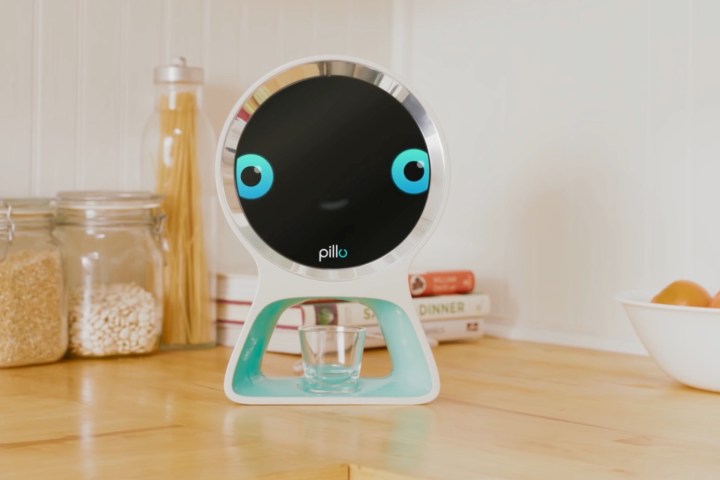
According to the company behind the device, Pillo uses facial recognition to identify different individuals, and then dispenses the appropriate pills to those people at the time they’re supposed to be taken. Not only that, but if it sees that you may have forgotten to take your pills, it will remind you to take them before you walk away. Pretty cool, huh?
Apart from those large claims, Pillo can also answer questions about health, sync data with your phone and smartwatch, and even set up video calls with health professionals. And all these features are combined in a small robot that sits on a table all day.
As a report from The Verge points out, Pillo seems a little too good to be true — that is, is it really possible that the company behind Pillo has managed to pack all that cutting-edge technology into a robot that now costs under $500 (and will retail for $600)?
If Pillo truly were capable of delivering the tech it promises, wouldn’t it be shooting for more than $75,000? After all, considering the success of Amazon Echo there could be a huge market for something like Pillo. Not only that, but the $75,000 goal is flexible — even if it doesn’t raise all the funds, all the money will still go straight to Pillo Health. Pillo says that it will reimburse you if the goal isn’t reached, and that the flexible goal was only chosen so customers could pay with credit cards, but it’s still important to exercise caution.
Of course, that’s not to say that there is anything dubious about this campaign — just that you should be cautious before investing in such a lofty project. Pillo has a year to deliver on its intentions, and says that it will ship in June 2017. When it is launched, it will cost $600, but if you back the campaign now you’ll get one for as low as $270.
Editors' Recommendations
- Segway expands its smart home footprint with robot lawn mowers at CES 2024
- Amazon Astro: everything you need to know about this home robot
- Adorable smart home robot unveiled at CES 2023 could be a great addition to your family
- 5 home robots you can buy now that are similar to the Amazon Astro
- Amazon Echo vs. Apple HomePod: Which has better speakers?


